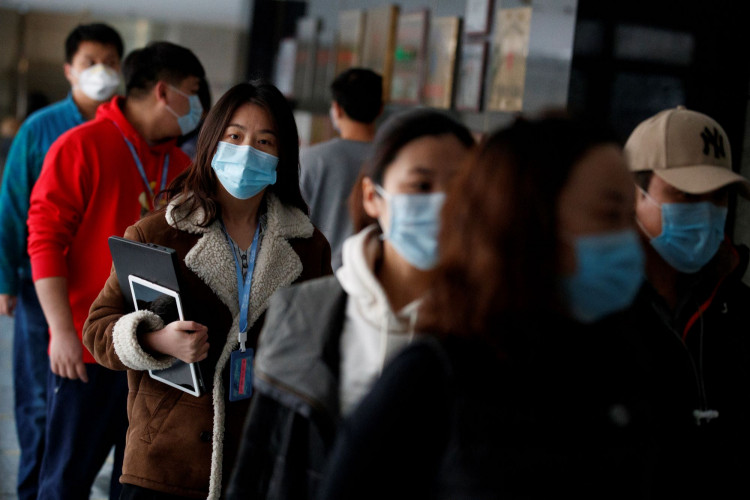The hammering China's foreign markets are still taking from COVID-19 means China's urban unemployment rate, which averaged 5.8% from January to April, will remain near its historically high peak of 6.2% recorded in February over the next few months.
China's urban unemployment rate has remained in the vicinity of 6.0% since January, according to official statistics. The unemployment rate of 6.0% for April revealed by the National Bureau of Statistics (NBS) Friday is the second time since the start of the year the figure has hit 6.0%.
China began the year with an unemployment rate of 5.3% in January, a figure that jumped to a record 6.2% in February as the massive deleterious effects of COVID-19 lockdowns were made manifest. Unemployment slowed somewhat to 5.9% in March.
It was only in 2017 that China's unemployment rate stood at 3.9%, the lowest since 2002, said the Ministry of Human Resources and Social Security. China created a historic high of 13.51 million new jobs in urban areas in 2017, 370,000 more than 2016, said the ministry.
Hard hit by the current unemployment spike are employees working for small and medium-sized enterprises (SMEs), which are the source of most jobs and economic growth in China. Third-party business registration data reveals 460,000 SMEs closed in the first quarter, said Bruce Pang, head of macro and strategy research at Chinese investment bank China Renaissance based in Beijing. Pang also pointed out there were 3.2 million new Chinese companies established in Q1, which might seem huge but is 29% fewer than the number posted during Q1 2019.
"We think that pressure on employment will continue," noted Pang Friday.
These factors that will hinder job growth include sluggish demand for Chinese exports as major markets remain shut down by the pandemic and a record-high number of university graduates this year. Unfortunately for employers, the age group hardest hit by high unemployment is the most productive. Unemployment among Chinese in the 25- to 59-year-old age group has remained at about 5.5% from February to April.
China's leaders, however, still balk at providing massive, multi-billion dollar financial stimulus packges such as those in the United States and Japan. Larry Hu, chief China economist at Macquarie, said Beijing's resistance to any stimulus will eventually fade due to "the pressure from unemployment (which) could be the main reason for stimulus escalation later this year." Beijing admits the pressure for some action to stanch high unemployment is increasing.
"The pressure on employment is rather large," said NBS spokesperson Liu Aihua Friday.
Liu pointed to April data showing some economic recovery, but did admit challenges remain, such as resuming work and the impact of the virus in China's overseas markets.
"Right now, the trajectory of economic development still requires observation, but ... based on the results of policies for resuming work and production, we have the confidence, ability and basis for extending the momentum of recovery and improvement," she said.
Liu noted the NBS' survey found the number of migrant workers that had returned to their jobs in the cities at the end of April was 90% of what it was in 2019. In early March, the number of migrant workers from the poorest households in returning to work was half of what it was a year ago.






